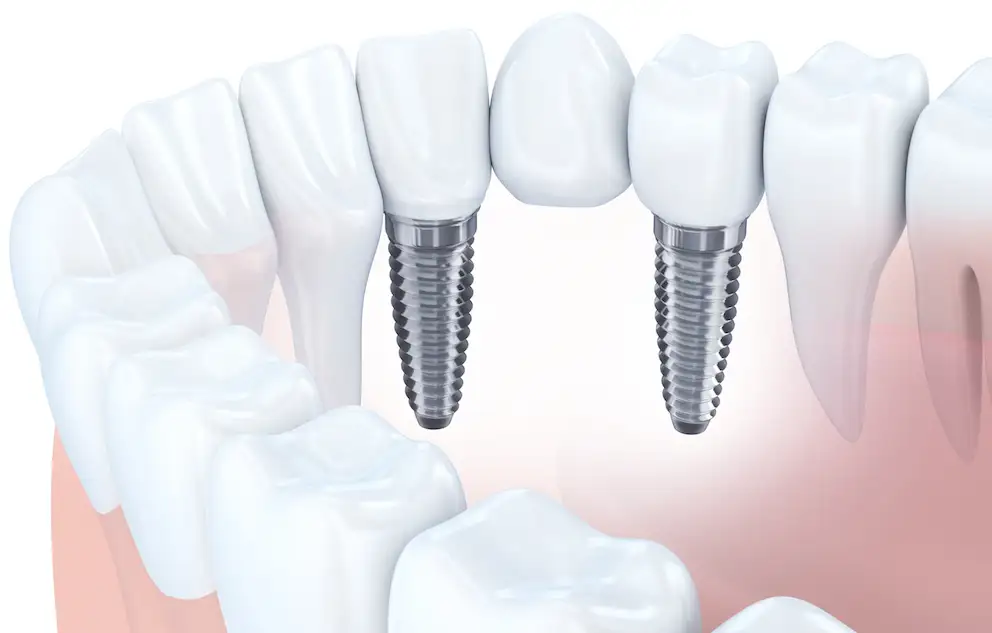Bridges span the space created when teeth are missing. A bridge may be recommended if you’re missing one or more teeth. A bridge is made up of two (or more) crowns for the teeth on either side of the gap with a false tooth or teeth in between. Dental bridges are supported by natural teeth or implants. Gaps left by missing teeth eventually cause the remaining teeth to rotate or shift into the empty spaces, resulting in a bad bite.
The imbalance caused by missing teeth can also lead to gum disease and temporomandibular joint (TMJ) disorders.




When several teeth in a row are missing, they can be replaced by a bridge anchored to implants. An implant is not needed for each tooth being replaced. Three or four teeth can be replaced with just two dental implants for support. This is less expensive than placing an individual implant for each tooth being replaced.
Dental implants provide several advantages over other teeth replacement options.
In the long term, implants look better, function better and are more comfortable.


A bridge is made up of two (or more) crowns for the teeth on either side of the gap. These two or more anchoring teeth are called abutment teeth with a false tooth or teeth in between. Dental bridges are supported by natural teeth or implants.
As with crowns, you have a choice of materials for bridges. Our dentist can help you decide which to use, based on the location of the missing tooth (or teeth), its function, aesthetic considerations and cost. Porcelain or ceramic bridges can be matched to the color of your natural teeth.